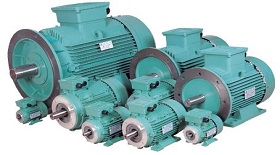The advantages of linear motor
1. High-speed response. Because some mechanical transmission parts with large response time constant (such as lead screw, etc.) are removed in the system, the dynamic response performance of the whole closed loop control system is greatly improved, and the reaction is extremely sensitive and quick.
2. Precision. The linear drive system eliminates transmission gaps and errors caused by mechanical mechanisms such as lead screw and reduces tracking errors that caused by transmission system lag during interpolation. Through the feedback control of linear position detection, the positioning accuracy of the machine can be greatly improved.
3. High dynamic stiffness. Due to the "direct drive", the high dynamic stiffness avoids the motion lag phenomenon caused by the elastic deformation, friction wear and reverse clearance of the intermediate transmission link when starting, changing speed and reversing. It also improves its transmission stiffness.
4. Fast speed and short acceleration and deceleration process. Since the linear motor is mainly used for maglev train (up to 500km/h) at the earliest, it is not a problem to meet the maximum feed speed (up to 60m /min /min or higher) of ultra-high-speed cutting in the feed drive of machine tools. Because of the above "zero transmission" high speed response, its acceleration and deceleration process is greatly shortened. In order to achieve the start of the moment to reach high speed, high speed operation can be instantly stopped. High acceleration can be obtained, generally up to 2 ~ 10g(g=9.8m/s2), while the maximum acceleration of ball screw transmission is only 0.1 ~ 0.5g.
5. The travel length is not restricted on the guide rail and can be extended indefinitely by series linear motor.
6. Quiet exercise and low noise. Due to the elimination of mechanical friction of driving parts such as screw and the use of rolling guide or magnetic pad suspension guide (no mechanical contact), the movement noise will be greatly reduced.
7. High efficiency. As there is no intermediate transmission link, energy loss in mechanical friction is eliminated, and transmission efficiency is greatly improved.



